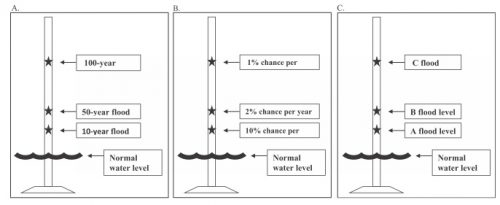by Tom Champoux, AMS Director of Communications
Recently, severe thunderstorms rolled east across the greater Boston area that culminated in an EF2 tornado touching down in the city of Revere, just a few miles from my house.
As I watched the weather on TV that day, I noticed some new information provided by the meteorologist as he gave his severe weather updates. Not only did he show the storm’s path, size, speed, intensity, and time of arrival, but he also included the number of people who were in the line of the storm’s path – in this case more than 200,000 would be affected.
This drive to continually innovate the flow of information to the public—refreshing, improving, and updating services in the process—is ingrained in the character of our weather, water, and climate community. It’s a process driven by AMS members across the enterprise.
I was reminded of this repeatedly while attending the AMS Summer Community Meeting this week in State College, Pennsylvania. This year, the theme was “Improving Weather Forecasts and Forecast Communications.” More than 160 attendees from across the country, including leaders in government, academic, and private sectors, convened to discuss, collaborate, and consider ways of improving weather data being collected, retrieving usable information more quickly, and sharing the most accurate information with the public as quickly as possible. In extreme cases, people have to make critical decisions in a matter of minutes.
Discussions focused on how to better inform the public, ensuring their awareness and safety while decreasing false-alarm rates. During the meetings, it became apparent very quickly how important this topic is to the entire weather, water, and climate community, and that hosting these meetings is a vital step for AMS as we bring together key stakeholders to continue improving all aspects of the enterprise. This year’s AMS Summer Community Meeting not only included well-known weather agencies, organizations, and companies but also social scientists, emergency managers, risk analysts, educators, big data specialists, and broadcast meteorologists.
Discussions covered a wide variety of topics such as public perceptions of words like “likely,” “probable,” “possible,” and “certain,” to describe potential weather. Other panel talks included, “Improving Communicating of Forecast Uncertainty,” Communicating Forecast Confidence,” “Conveying Weather Risk,” and “The Weather Enterprise of the Future.” There were also talks about how various social media may hurt or help communicating accurate information.
A tour of AccuWeather Forecast Center headquarters here during the meetings showed how important these issues are to the entire company. I was impressed with their efforts to improve technology, data collection, analysis, and communications. Similarly, National Weather Services Director Louis Uccellini was on hand to talk about what the NWS is doing to address these issues.
The AMS Summer Community Meeting is unique because of the ideas that emerge there. It also is a reminder of how vital it is to bring everyone together. Ideas, information, and experiences are shared freely, and the conversations both inside and outside the meetings remind us all how committed everyone is to constantly improving the entire enterprise, whether they’re doing it independently in their separate jobs, like my local weathercaster, or together in valuable gatherings like the AMS Summer Community Meeting.

